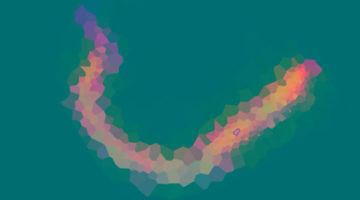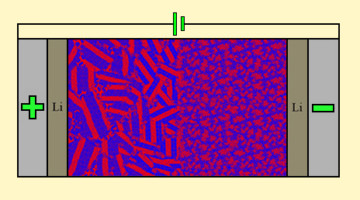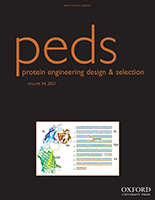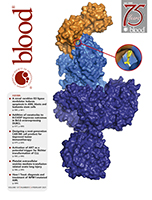This scene depicts the layer-by-layer growth of an inorganic film in a selected area. The alternation of a chemical agent (blue) deposits on a gray substrate to form an inorganic film. A cross-linked organic material (tan) locally inhibits this reaction and prevents film deposition. Furthermore, the pattern-wise cross-linking of this organic film enables nanoscale pattern generation. Read more »
ALS in the News (February 2021)
-
-
-
- Worth their salt: New battery anodes use salt for energy, stability
- Department of Energy to invest $25 million in polymer upcycling, plastic waste reuse research
- Synthesis of a potent antibiotic follows an unusual chemical pathway
- How scientists shot down cancer’s ‘Death Star’
- A detailed look inside tsetse flies
- Copperizing the complexity of superconductivity
-
-
To Speed Discovery, Infrared Microscopy Goes “Off the Grid”
Researchers developed a highly efficient way to collect infrared microscopy data that avoids the use of slow, grid-based raster scans. The method substantially reduces image-acquisition times by autonomously increasing sampling density in regions of interest, facilitating infrared spectromicroscopy of biochemical processes in real time. Read more »
Chiral Spin Textures in Amorphous Iron–Germanium Thick Films
Robert Streubel and co‐workers report the formation of topological magnetization vector fields in disordered materials with local inversion symmetry breaking, harnessing high‐resolution Lorentz microscopy, quantitative x‐ray microspectroscopy, and coherent scattering. The image shows the reconstructed in‐plane magnetic induction of closely packed Bloch skyrmions embedded into helical spins. Read more »
3D Whole-Cell Mapping of Insulin Secretion
Researchers used soft x-ray tomography to gain a 3D whole-cell view of how insulin-producing pancreatic cells react upon exposure to glucose and a diabetes drug. The approach enables direct quantification of intracellular responses before, during, and after cell stimulation, providing new insights into how drugs alter cell function. Read more »![]()
![]()
Probing Composite Materials to Make Better Batteries
Researchers found that when an ion-conducting polymer composite is placed in an electric field, it forms ion-rich hotspots that continue to grow for hours after the field is removed. The study opens a new path to understanding the dynamic structure of composite materials for smaller, lighter batteries. Read more »![]()
![]()
Construction, characterization and crystal structure of a fluorescent single-chain Fv chimera
In vitro display technologies based on phage and yeast have a successful history of selecting single-chain variable fragment (scFv) antibodies against various targets. However, single-chain antibodies are often unstable and poorly expressed. We explore the feasibility of converting scFv antibodies to an intrinsically fluorescent format by inserting a monomeric, stable fluorescent protein between the light- and heavy-chain variable regions. Read more »
Actor in a Supporting Role: Substrate Effects on 2D Layers
ALS studies highlighted interactions that can occur between technologically intriguing 2D materials and the substrates that physically support them. The results provide important insights into the issue of non-negligible interlayer coupling and demonstrate the potential for tuning single-layer properties through substrate engineering. Read more »
CC-90009, a novel cereblon E3 ligase modulator, targets acute myeloid leukemia blasts and leukemia stem cells
A number of clinically validated drugs have been developed by repurposing the CUL4-DDB1-CRBN-RBX1 (CRL4CRBN) E3 ubiquitin ligase complex with molecular glue degraders to eliminate disease-driving proteins. Here, we present the identification of a first-in-class GSPT1-selective cereblon E3 ligase modulator, CC-90009, that targets acute myeloid leukemia blasts and leukemia stem cells. Read more »
A Detailed Look Inside Tsetse Flies
To better understand the unique reproductive biology of tsetse flies, which are carriers of the parasites that cause a deadly infection known as African sleeping sickness, researchers explored the intact organs and tissues of tsetse flies using a powerful 3D x-ray imaging technique at Berkeley Lab’s Advanced Light Source. Read more »
- « Previous Page
- 1
- …
- 34
- 35
- 36
- 37
- 38
- …
- 83
- Next Page »








